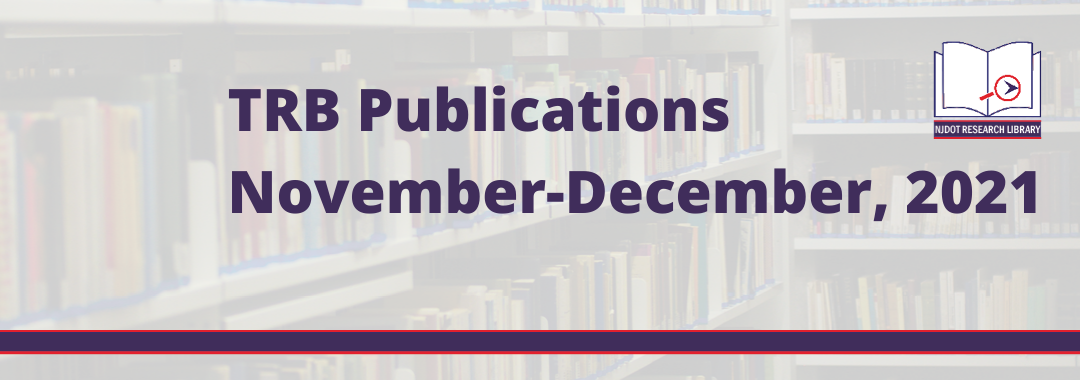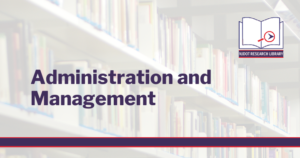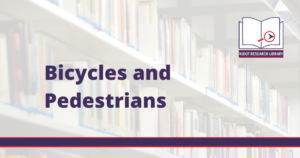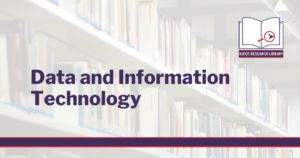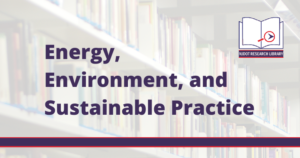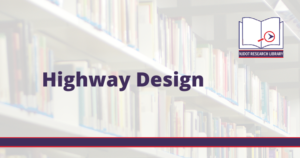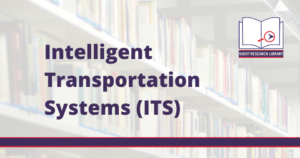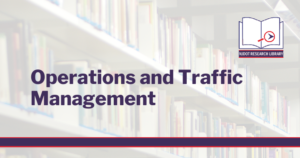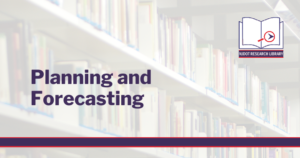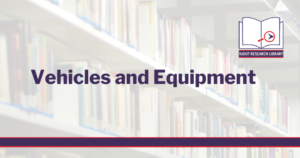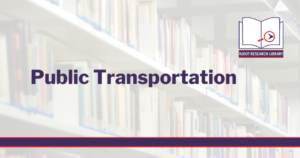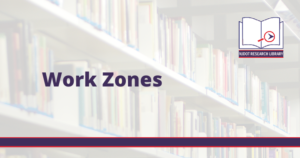The following is a list of research published by the Transportation Research Board (TRB) between November 1, 2021 and December 31, 2021. Current articles from the TRB may be accessed here.
Causal Analysis of Lateral Deviation of Flights in Terminal Airspace
Benefits Derived from Arrival Management and Wake Turbulence Re-Categorization in China
Data-Driven Method for the Prediction of Estimated Time of Arrival
Emergence of 4-D System Fundamental Diagram in Urban Air Mobility Traffic Flow
Legal Issues Relating to Airport Commercial Contracts
Joint Modeling of Access Mode and Parking Choice of Air Travelers Using Revealed Preference Data
A Solution to Drone Routing Problems using Docking Stations for Pickup and Delivery Services
ACRP Research Report 226: Planning and Design of Airport Terminal Restrooms and Ancillary Spaces
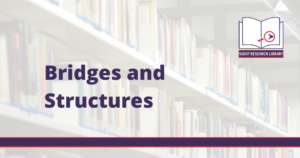
Assessment of AASHTO Load-Spreading Method for Buried Culverts and Proposed Improvement
Geosynthetic Reinforced Fill Material for Tennessee Bridge Approach Slab Support
Culvert Inspection Vehicle with Improved Telemetry Range
Performance of Back-to-Back Geogrid Reinforced Soil Retaining Walls for Railways during Service
Benefits of Compiling and Analyzing Hydraulic-Design Data for Bridges
Vulnerability of Drop Ceilings in Roadway Tunnels to Fire-Induced Damage
Database Enabled Rapid Seismic Vulnerability Assessment of Bridges
Assessment of Provisions for Load Rating Gusset Plates in Steel Truss Bridges
Database Design and Integration Framework for Risk Management for State Highway Agencies
Mobility as a Service Operating Model to Enable Public Policy
Post-Hurricane Vegetative Debris Assessment Using Spectral Indices Derived from Satellite Imagery
Smart Parking Systems: A Data-Oriented Taxonomy and a Metadata Model
Driving Behavior at Signalized Intersections Operating under Disordered Traffic Conditions
Automated Object Detection, Mapping, and Assessment of Roadside Clear Zones Using Lidar Data
An Enhanced Network-Level Curve Safety Assessment and Monitoring Using Mobile Devices
FHWA Expands Access to Highway Infrastructure Engineering Research Data
Estimating the Total Number of Workplace and Public Electric Vehicle Chargers in California
Empirical Assessment and Modeling of Traffic-induced Air Pollution
Multi-objective Eco-Routing Model Development and Evaluation for Battery Electric Vehicles
Characterizing the Particle Variations and Human Exposure in Port and Urban Areas
Driving Coverage of Charging Stations for Battery Electric Trucks Located at Truck Stop Facilities
Economic Feasibility Analysis of Charging Infrastructure for Electric Ground Fleet in Airports
Analysis of Retrofit and Scrappage Policies for the Indian Road Transport Sector in 2030
Capacity of Mini-Roundabouts: A New Model
Development and Testing of a Concrete Median Barrier for Flood-Prone Areas
Automated Assessment of Passing Sight Distance on Rural Highways using Mobile LiDAR Data
Development, Crash Testing, and Evaluation of Steel-Post Trailing-End Guardrail Anchorage System
Evaluating the Impacts of Speed Limit Increases on Rural Two-Lane Highways Using Quantile Regression
Safety Performance of Crossroad Ramp Terminals at Single-Point and Tight Diamond Interchanges
Evaluating Traffic Impacts of Permitting Trucks in Transit-Only Lanes
Impacts of Holding Area Policies on Shared Autonomous Vehicle Operations
Estimating Safety Impacts of Adaptive Signal Control Technology Using a Full Bayesian Approach
Online and Proactive Vehicle Rerouting with Uppaal Stratego
Driver Expectations toward Strategic Routing
Probabilistic Situation Assessment for Intelligent Vehicles with Uncertain Trajectory Distribution
Distant Traffic Light Recognition Using Semantic Segmentation
Third-Party Data Fusion to Estimate Freeway Performance Measures
Curbspace Management Challenges and Opportunities from Public and Private Sector Perspectives
Analyzing the Newest Interchange Connection at Cairo Metro Network Pertaining to Passenger Flow
Dynamic Vehicle Routing with Parking Probability under Connected Environment
Comparative Appraisal of Critical Gap Estimation Techniques in the Context of U-turning Vehicles
Optimal Excess Commuting Evaluation Based on Local Minimal Costs
Connected and Automated Parking Feasibility – A Pilot Study
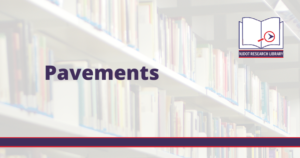
Life-Cycle Assessment of Asphalt Pavements with Recycled Post-Consumer Polyethylene
Utilization of Cold Central Plant Recycled Asphalt in Long-Life Flexible Pavements
High Friction Surface Treatment Deterioration Analysis and Characteristics Study
Mechanistic-Empirical Faulting Prediction Model for Unbonded Concrete Overlays of Concrete
Quantitative Assessments of Crack Sealing Benefits by 3D Laser Technology
Input Parameters for the Mechanistic-Empirical Design of Full-Depth Reclamation Projects
Composition and Oxidation Dependence of Glass Transition in Epoxy Asphalt
Crowd-Sensing Road Surface Quality Using Connected Vehicle Data
Fatigue Tolerance of Aged Asphalt Binders Modified with Softeners
Predicting Pavement Roughness Using Deep Learning Algorithms
Long-Term Effects of Subsurface Drainage on Performance of Asphalt Pavements
Development of a Balanced Mix Design Method in Oregon to Improve Long-Term Pavement Performance
Safety Impacts of Transit Signal Priority Using a Full Bayesian Approach
Bilevel Optimization of Intercity Railway Alignment
Identification of High-Risk Driving Behavior and Sections for Rail Systems
Evaluation of Operating Schemes on Municipal Rail Transit with Express/Local Mode
Deep Learning for the Detection and Recognition of Rail Defects in Ultrasound B-Scan Images
Automatic Rail Surface Defects Inspection Based on Mask R-CNN
Delay Propagation in Large Railway Networks with Data-Driven Bayesian Modeling
Robust Capacitated Train Rescheduling with Passenger Reassignment under Stochastic Disruptions
Novel Algorithm for Mutual Alignment of Railway Track Geometry Measurements
Quantifying Recent Trends in Class 1 Freight Railroad Train Length and Weight by Train Type
Demand Responsive Transit Simulation of Wayne County, Michigan
Transportation Amenities and High-Tech Firm Location: An Empirical Study of High-Tech Clusters
Performance Measurement and Evaluation Framework of Public Microtransit Service
Estimation of Path Travel Time Distributions in Stochastic Time-Varying Networks with Correlations
Exploring Individual Activity-Travel Patterns Based on Geolocation Data from Mobile Phones
Performance Comparison of Supply-Demand Matching Policies for On-Demand Mobility Services
Microtransit Has the Potential to Flip Transit on Its Head
Hybrid-Data Approach for Estimating Trip Purposes
Freeway Network Travel Time Reliability Analysis Methodology and Software Tool Development
Travel Mode Choices in a Greening Market: The Impact of Electric Vehicles and Prior Investments
Examining Customers’ Critical Acceptance Factors toward Ridepooling Services
Optimizing Budget Allocation for Incentive-Based Active Travel Demand Management Solutions
Increasing Transparency and Feasibility of Auto Accessibility for Project Prioritization
On Time-Dependent Trip Distance Distribution with For-Hire Vehicle Trips in Chicago
Validating and Calibrating the Highway Capacity Manual Arterial Travel Time Reliability Methodology
Personas: A Market Segmentation Approach for Transportation Behavior Change
Estimating the Impact of High-Fidelity Rainfall Data on Traffic Conditions and Traffic Prediction
Snap Judgements and Availability Bias in Travel Decisions
Development of Estimating Methodology for Transit Accessibility Using Smart Card Data
Relative Mobility Analysis of a Public Transport Network in Comparison with Car Travel
Investing in Transportation Resilience: A Framework for Informed Choices
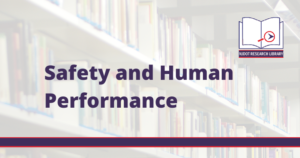
Are Older Drivers Safe on Interchanges? Analyzing Driving Errors Causing Crashes
Identification of High-Risk Driving Behavior and Sections for Rail Systems
Verification of usRAP Risk Assessments for Run-Off and Head-On Crashes Using Field Data
Relating Household Consumption Expenditures to Road Traffic Fatalities: A Rural-Urban Study
Modeling Anticipation and Relaxation of Lane Changing Behavior Using Deep Learning
Understanding the Lateral Dimension of Traffic: Measuring and Modeling Lane Discipline
Effect of Socioeconomic and Demographic Factors on Crash Occurrence
Investigating Underage Alcohol-Intoxicated Driver Crash Patterns in Louisiana
Surrounding Vehicles’ Contribution to Car-Following Models: Deep-Learning-Based Analysis
Corner Case Generation and Analysis for Safety Assessment of Autonomous Vehicles
Virtual Risk Assessment for the Deployment of Autonomous Shuttles
Influences of Gesture-Based Mobile Phone Use While Driving
Virtual Reality Application on Road Markings’ Visibility Analysis
One-Way Coupling of Fire and Egress Modeling for Realistic Evaluation of Evacuation Process
Public Transport Fleet Replacement Optimization Using Multi-Type Battery-Powered Electric Buses
Departure Time Choice in Schedule-Based Transit Assignment
Designing Multiple Short-Turn Routes to Mitigate the Crowding on a Bus Network
Scheduling a Bus Fleet for Evacuation Planning Using Stop-Skipping Method
Modeling Bus Capacity for Bus Stops Using Queuing Theory and Diffusion Approximation
Preferences toward Bus Alternatives in Rural Areas of the Netherlands: A Stated Choice Experiment
Dynamic Modal Analysis of a Passenger Bus: Theoretical and Numerical Studies
TCRP Research Report 221: Redesigning Transit for the New Mobility Future

